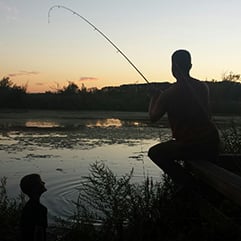Send comments to EPA on PCB cleanup
EPA determined that the Hudson River PCB cleanup “will be protective of human health and the environment,” even though two to three times as many PCBs remain in the river than expected. Let’s be clear: toxic PCBs continue to threaten people and wildlife. EPA and GE must do more.
The cleanup is already years behind schedule, and EPA claims it needs another eight years of data to understand if it is working. In short, EPA is declaring success before it has the science to back it up. One thing is for sure: New Yorkers will not be able to eat fish from the river for decades, or longer, without significant restrictions. This is unacceptable.
Take Action: Submit Your Comments to EPA by September 1, 2017
We must urge EPA to officially say the cleanup is not protective and more work is needed
to ensure a healthy Hudson River. Below are additional points to include in your
comments:
- Below the Troy Dam — and all the way to Manhattan — the EPA’s own studies show PCB
concentrations in fish haven’t declined as expected as a result of the upriver dredging. - With more PCBs left in the river than anticipated, additional dredging of the upper 40 miles of
the Hudson River is necessary. - GE should be required to further investigate the lower 150 miles of the Hudson River to
ensure cleanup goals are met. - EPA must give more weight to studies by federal and state agencies that challenge EPA’s
findings. - The cleanup cannot be declared complete by the EPA until the PCB contamination in the
entire Hudson River reaches a level that does not threaten human health and the
environment.
Written comments can be sent by mail or email [email protected]. Please cc’ [email protected], [email protected], and your Congressional representatives.
Gary Klawinski
Director, Hudson River Field Office
U.S. Environmental Protection Agency
187 Wolf Road, Suite 303
Albany, NY 12205
Learn more at www.riverkeeper.org/pcbs


